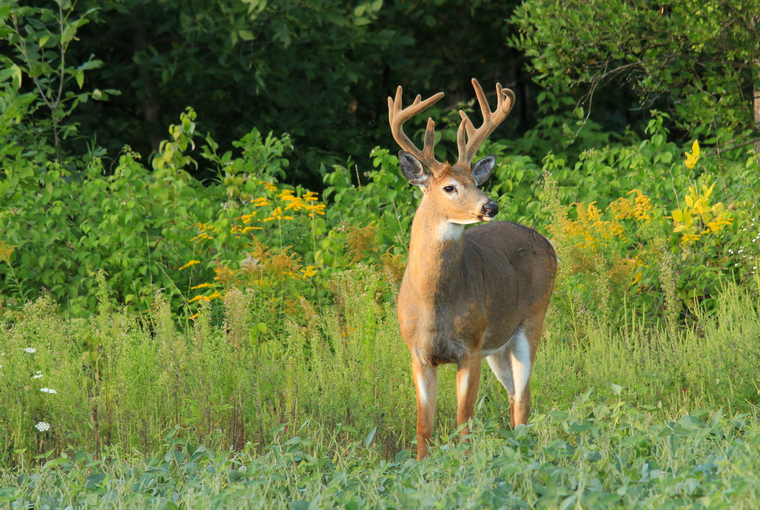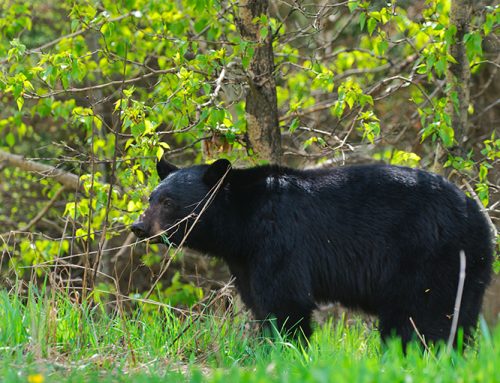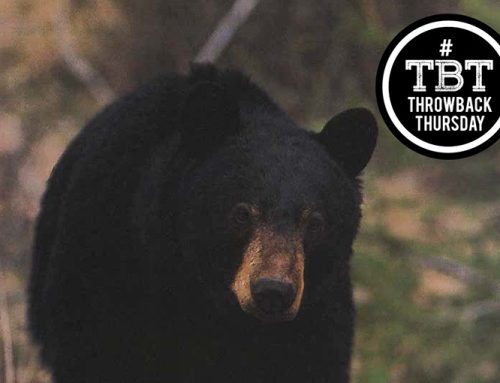
Tom Petty once sang that “waiting is the hardest part,” and when it comes to waiting for deer season, I can be very impatient. I know many of you are, too. It’s the nature of the hunter to look ahead, and to dream. Luckily, there are good, constructive activities that can be undertaken pre-season that will make all the difference when opening day arrives. Here are a few things that you can do to make the arrival of the big-game season feel shorter.
1) Pre-season scouting
Scouting can mean different things to different people. For me, it involves walking the hunting areas that were my focus the previous season. As often as not, these walks are done on the game trails that lead to and from where I’ve set up the previous season. This is best done before the leaves come out. So the window is tight. Yet, it’s amazing how many things you see with fresh eyes six months after the hunting season has ended. Rubs on trees are all worth noting. For reasons I’m not entirely sure of, rubs stick out like sore thumbs in the spring. I’ve found huge ones that I’d walked by but didn’t see during the hunting season. Rubs are a good indication of where bucks have been frequenting, and a line of rubs is an indication of a key buck travel area.
Scrapes, those disturbed areas on the forest floor, are generally located under overhanging branches or a large pine or spruce. Scrapes serve a variety of purposes, but they have been described to me as the “calling cards” of bucks, and that seems an accurate description. Scrapes can vary from dinner-plate sized to the circumference of a garbage can lid. Not all giant scrapes are from mega bucks, but they are usually made by a dominant animal. In the past, I’d often put a piece of flagging tape on the tree, to remind myself later of where scrapes and rubs are located. These days I’ve also begun making waypoints on my handheld GPS when I find notable sign. This helps you visualize where they are on the map of your hunting area. Patterns will often emerge.
2) Shed hunting
The hunt for sheds can be a fascinating addition to the experience. My shed hunting success has never been that great, maybe because many of the bucks I hunt seem to leave the area once the rut is over. However, I’ve found enough to make it worth a close look. If you know where the deer are bedding, it’s worth checking there as antlers seem to drop when deer get up or settle down. Crossings at creeks, fences, and wherever deer might be forced to jump can also be prime shed-hunting zones. If you have been monitoring certain bucks via trail cams, finding a shed — or sheds — from one of them is nearly as exciting as actually harvesting the animal. Almost.
3) Shooting lane and trail clearing
Cleaning up sight lines and trails requires some sweat, but it will pay off in spades when hunting season arrives. If you have a tree stand, get into it, take a look around and make sure no trees or branches have fallen, and you are still happy with positioning. This is a good time to move a tree stand if that is part of your plan. Also, make sure any tree stand is still safe and secure. If you need to cut limbs, there is a wide variety of pruning tools for the job. I have a couple of hand saws on long poles that work well. Limb sheers can take medium-sized branches out. If you are using any type of power saw, please use safety gear such as a hard hat, goggles, and chain-saw pants. It is also smart to have someone with you, for both safety, and for help if you need to move tree stands. On private land, make sure you have landowner permission before dropping trees.
4) Trail-cam placement
The sooner trail cams go up the better. Some people leave trail cams up all season, and that certainly is a great way to monitor deer (and other wildlife activity) all year long. My trail cams go up in May or June, to get a sense of deer herd numbers, and local bucks. It’s incredible to see the antlers start as bumps, grow into small shoots, and then become incredible velvet antlers. Often you will see bachelor groups of bucks, as well as does with fawns. Setting up trail cams will also show if there are predators about. I set a camera near a watering hole or pond, or on a trail that goes into a feeding area, such as a field or meadow. The more cameras you have out, the more intel you can gather as the season goes on. It’s impossible not to learn about wild-deer behaviour if you have your trail cams out early. Knowledge is power.
5) Get familiar with your firearm
Whether you are a rifle hunter, sling a crossbow, or shoot a bow, you will be a much more prepared hunter if you practise. Shoot and shoot some more. The more familiar you are with your tool, the better you will be at making it count when the moment presents itself. A simple thing, but often overlooked.
These are just a few of the ways you can get prepped for the hunting season. At the very worst, you will enjoy some great days outdoors. A prepared hunter in the pre-season is often a successful one come the hunt.

Senior Editor Gord Ellis is a journalist, radio broadcaster, photographer, and professional angler based in Thunder Bay. Reach Gord at: [email protected], Twitter: @GordEllis
Originally published in the August 2020 issue of Ontario OUT of DOORS magazine.






Leave A Comment